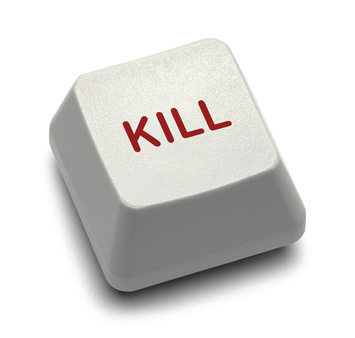Have you ever wondered what would happen if we reached a
point in which robots carried out all of the mundane tasks that we don’t want
to do? Then what if these robots learned to optimize these tasks and update
themselves based on real world experiences? Then what if they stopped updating
to do the right thing, but instead to do the wrong thing? What if this led to robots
plotting against humans in an attempt to takeover the world? Yes, what I just
explained is the plot from “I, Robot” but the general line of thinking is more
realistic than you would think.
| AI Robots in "I, Robot" |
 Google researchers have recently developed an AI kill switch
in order to shut down an AI robot no matter what. This is incredibly important
because AI robots often work by trying to maximize some sort of function or
algorithm. They will then read real world events as inputs and adapt those
inputs into their systems so that they can continue to maximize their
functions. Human interference can be considered one of these real world events.
Therefore, if the machine determines that human interaction is detrimental to
maximizing their functions or that the human is trying to shut it down, the machine could act out against the
human to stop this from happening. Due to this fear, Google created an AI kill
switch to automatically shut down a robot at anytime.
Google researchers have recently developed an AI kill switch
in order to shut down an AI robot no matter what. This is incredibly important
because AI robots often work by trying to maximize some sort of function or
algorithm. They will then read real world events as inputs and adapt those
inputs into their systems so that they can continue to maximize their
functions. Human interference can be considered one of these real world events.
Therefore, if the machine determines that human interaction is detrimental to
maximizing their functions or that the human is trying to shut it down, the machine could act out against the
human to stop this from happening. Due to this fear, Google created an AI kill
switch to automatically shut down a robot at anytime.
However, Google would never want to use the kill switch unless it had to and
is instead working on creating a way to have robots read human
interactions as part of the task and therefore not as a detrimental
interruption. Doing so would essentially allow humans to teach robots things
such as to not go outside in the rain. Hopefully, through both teaching robots
how to read human interactions and including a kill switch in the machines, we will
never have to live through the reality in “I, Robot.”
Resources:
- http://motherboard.vice.com/read/google-researchers-have-come-up-with-an-ai-kill-switch
- http://www.themanufacturer.com/wp-content/uploads/2015/08/EPA245.jpg
- https://www.singularityweblog.com/wp-content/uploads/2015/02/Kill-Switch.jpg
- http://images.contentful.com/7h71s48744nc/3l9IwugJKgcCq8YMwWGiy/8fdbc22b56ca7a2d34fb26e76952533e/i-robot.jpg



